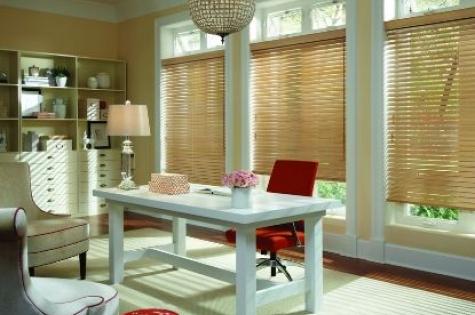Whether you consider yourself traditional or modern in style, window treatments can make a big statement about one of the most important architectural features of your home. Along with aesthetics, they provide warmth, privacy and light control as well. Window treatments are not limited to curtains and blinds but encompass window design and window glass treatments as well.
Let’s discover some tips and mistakes to avoid when designing your window treatments.
#1 - Work Out a Budget First
Whether it’s for the windows themselves or window coverings, you’ll need to know how much money you have to spend before you can really decide on the best options for your home. There’s little point aiming high if your budget doesn’t allow it. You’ll only end up with a job half-finished.
#2 - Make Sure Your Windows Are the Correct Height
Different rooms will require different size windows. Having windows that are too small or too large will not only detract from the look of a room but could let in too much or not enough natural light. You’ll also want to consider the height from the floor to the bottom of the window. Glass that is positioned too low to the ground could be a hazard in the bedroom of a small child, for example.
#3 - UPVC Double-Glazed Windows
There are a variety of UPVC double-glazed windows on the market and they have several advantages.
You can choose from:
- Tilt-Turn Windows
- Sliding Windows
- Awning Windows
- Casement Windows
These windows insulate against outside noise, as well as keeping your home cooler in summer and warmer in winter. They look modern and stylish and will also save you money on your energy bills.
#4 - Architectural Details
Plain windows are just that - plain looking. This is fine if the windows will be predominantly covered up by curtains or blinds, but if you really want to showcase your windows in a particular room, you’ll definitely want to choose a design that appeals to the eye regardless of window coverings. A search online will always spark some good ideas.
#5 - Have Window Coverings Made To Order
If you plan to install blinds, curtains or drapes, it’s always wise to have a professional come into your home, measure up your windows and have the coverings manufactured to fit perfectly. Buying curtains and blinds off the shelf in a store are bound to lead to issues when you go to hang them or install them. Results will be far superior if you have them made to order.
#6 - Windows Also Need To Be Practical
Having windows that open inwards in a really small room is not practical, as the windows will consume too much space. When designing your window placement and treatments, you’ll need to go from room to room and think about what window design will work best, but still fits in with your personal style.
#7 - Consider Your Privacy Needs
Vertical blinds and Venetian blinds are always a great option when it comes to privacy. The reason is you can adjust the angle of the slats to let in breeze and light whilst still maintaining your privacy. The slats also work well to direct the breeze in the direction you want it to travel. When fully closed these blinds offer total privacy as well as helping to insulate the room.
#8 - Consider the Sun Angle
Rooms that face the sun in either the morning or the afternoon will usually require different window treatments and coverings to combat the direct light. Once again UPVC treated windows are an excellent choice, and you might want to consider blackout curtains or dark coloured blinds for these rooms as well.
#9 - Choose Curtains for a Soft, Traditional Look
Sheer curtains look very sophisticated in any room and can really add a touch of timeless elegance. For rooms where you need more light control, curtains made from heavier and darker material will be required. You also have the option of blending sheer curtains with darker drapes for a nice contrast, or layer one over the other.
#10 - Colour Is Everything
You want your windows to be a showpiece, so the colours you choose are important. While you want window treatments that work well with your style, the colours also have to blend in with the rest of the room and not stand out in a negative way. If you want to play it safe, then neutral colours like white, beige and even pastels are a good choice.








 Agree (0)
Agree (0) Disagree (
Disagree (









__small.png)










